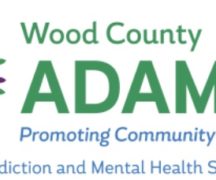By JULIE CARLE
BG Independent News
A $6.6 million grant to strengthen behavioral health crisis services for youth is a big deal for Children’s Resource Center and Wood County.
The $6,646,703 grant, which was announced Monday, is part of $90 million in federal American Rescue Plan Act funds awarded to CRC and the Wood County Alcohol, Drug Addiction and Mental Health Services Board by the Ohio Department of Mental Health and Addiction Services (OhioMHAS). The funds will go “directly into building and renovating our youth crisis services at Children’s Resource Center,” Amanda Kern, Wood County ADAMHS executive director, told the board at Monday’s meeting.
Renovations will be made to the current eight-bed crisis residential unit at CRC on Klotz Road in Bowling Green, increasing the capacity to 16 beds—10 traditional crisis residential unit beds and six intensive care beds.
The intensive care beds will be available for youth who are not able to live in a congregate setting without putting themselves or others at risk. There will be psychiatric urgent care for youth, and the opportunity for a 23-hour safe space for observation. Mobile Response and Stabilization Services will continue to be offered through CRC.
Melanie VanDyne, CRC executive director, clarified that the building will be renovated, not expanded. The changes will allow for the ability to separate populations in the facility.
CRC has committed to implementing evidence-based practices, with plans to expand its current curriculum to include dialectical behavioral therapy, eye movement desensitization and reprocessing (EMDR) and neuro- and bio-feedback in addition to its current evidence-based practices, which are proven to help stabilize youth in crisis, as well as for youth who are at risk for violence against self or others.
“We found out about the grant this morning and learned we received our full request,” Kern said. “This (type of facility) is unique in Ohio.” While crisis behavioral health services are typically attached to a hospital setting, this one in Wood County will be freestanding, not affiliated with a hospital.
Kern and the WCADAMHS staff worked tirelessly with VanDyne and CRC staff on the proposal to the state. The collaboration was paramount to receiving the grant, Kern said. Because the grant was to come from ARPA funds they also had to “work in tandem with other northwest Ohio boards to get their support for the application.
This will allow the eventual possibility to place youth from other counties if space allows and if regional dollars are provided next year, Kern added.
“This is a unique grant because it’s 100% funded; there are no matching funds required,” VanDyne said.
Gov. Mike DeWine signed House Bill 45 into law on Jan. 6 of this year. The legislation appropriated $90 million in ARPA funds to support Ohio’s Crisis Infrastructure.
“Because of these investments, more Ohioans and their families will have a better response to their behavioral health crisis needs than ever before,” Lori Criss, OhioMHAS director, said about the ARPA grant. “With these projects, Ohio is taking a leap forward to reverse decades of neglect for Ohio’s behavioral health crisis care system, ultimately creating a more hopeful future for people experiencing a behavioral health crisis.”





